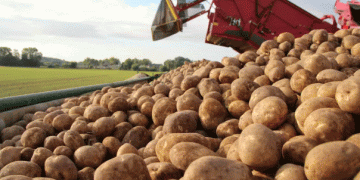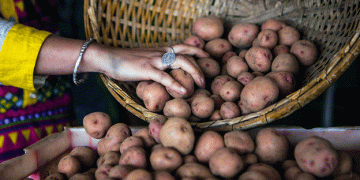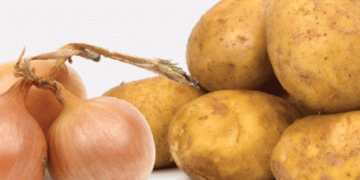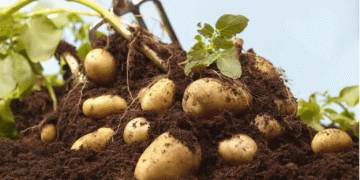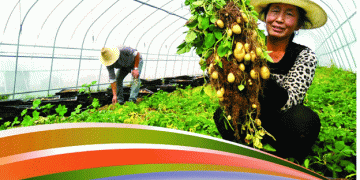As farmers in Thanh Hóa Province begin winter planting, there is a notable shift away from traditional crops to high-value alternatives. This transition aims to maximize yields and increase profitability, a strategy supported by both local governments and private agricultural companies. The focus is on integrating crops like potatoes, maize, and high-quality vegetables, with modern technologies and techniques playing a crucial role in enhancing overall production efficiency.
In Hoằng Tiến Commune (Hoằng Hóa District), 26 hectares of potatoes have been sown in collaboration with An Việt International Joint Stock Company. Local farmers have eagerly prepared the fields, applying techniques such as elevated ridges and soil drying, while ensuring fertilizer availability. Special potato varieties such as Marabel and Julinka, sourced from Germany, have been introduced to increase yields. Additionally, the commune has implemented VietGAP standards, utilizing drones for pesticide application and mechanization for soil preparation.
In previous years, potato yields in Hoằng Tiến averaged 26-30 tons per hectare, generating revenues of around 180 million VND per hectare. With assured market contracts for the entire harvest, potatoes remain a high-value crop for the winter season. Beyond potatoes, the district plans to plant other valuable crops like maize, peanuts, and a variety of vegetables in the winter of 2024.
Expanding Safe Vegetable Production
The focus on high-value crops is also evident in Thiệu Hóa Township, which has become a leader in safe vegetable production. This season, local farmers are growing crops such as tomatoes, cabbage, kohlrabi, lettuce, and herbs, which fetch higher prices. With long-standing experience in VietGAP-certified farming, these farmers avoid chemical pesticides, maintaining sustainable practices while ensuring high-quality produce for consumers.
According to Đỗ Thành Đồng, Chairman of Thiệu Hóa Township’s People’s Committee, the area boasts 23.9 hectares of safe vegetable production, with an annual income of approximately 700 million VND per hectare. This is a significant economic driver, especially considering that winter is the most profitable season due to high consumer demand.
Supporting the Agricultural Sector with Diversified Crops
Thanh Hóa Province aims to plant over 47,000 hectares of winter crops for the 2024-2025 season, focusing on diverse crop groups to mitigate market fluctuations. Core crops include maize, soybeans, potatoes, and sweet potatoes, with maize and vegetables seen as the primary drivers for both domestic consumption and export. Moreover, specialized crops, such as greenhouse-grown tomatoes and watermelons, are being prioritized for their high market value.
By encouraging diversification, the local government is working to balance supply and demand across different markets. For example, crops like maize are essential not only for human consumption but also for producing feed for dairy and beef cattle. Meanwhile, vegetables and other crops such as cucumbers, green beans, and pumpkins are slated for domestic processing and export to traditional markets.
In this context, advanced technologies such as high-tech greenhouses and net houses are becoming increasingly important. These technologies allow farmers to expand the cultivation of premium vegetables and fruits, thereby boosting production efficiency and product quality. Efforts are also being made to link crop production with food safety certifications and traceability systems, ensuring that Thanh Hóa’s agricultural products can compete on both domestic and international markets.
The shift towards high-value crops in Thanh Hóa’s winter planting season represents a strategic move to enhance agricultural productivity and profitability. By focusing on crops with higher economic returns and integrating modern farming technologies, farmers are better positioned to meet market demand while improving their livelihoods. As the province continues to diversify its crop portfolio and embrace advanced production techniques, it is setting a strong foundation for sustainable agricultural growth.

